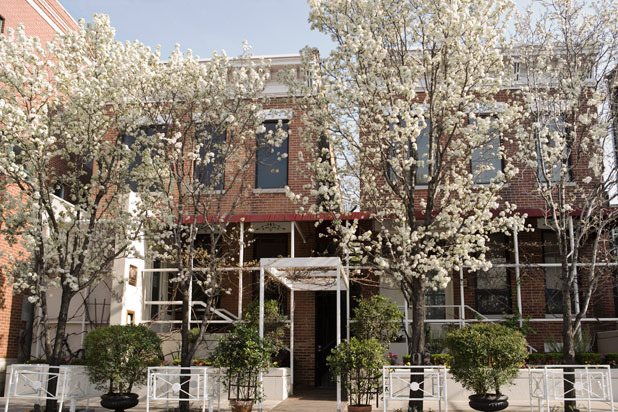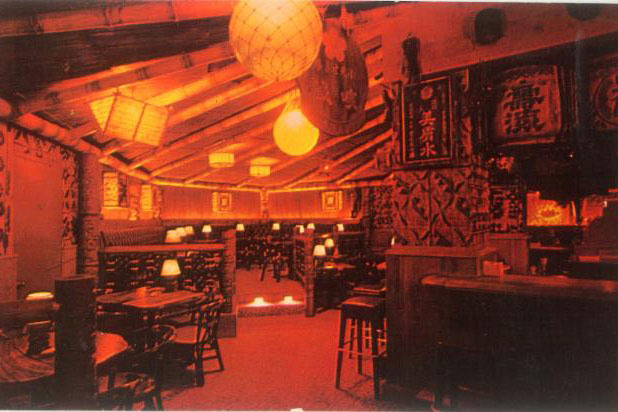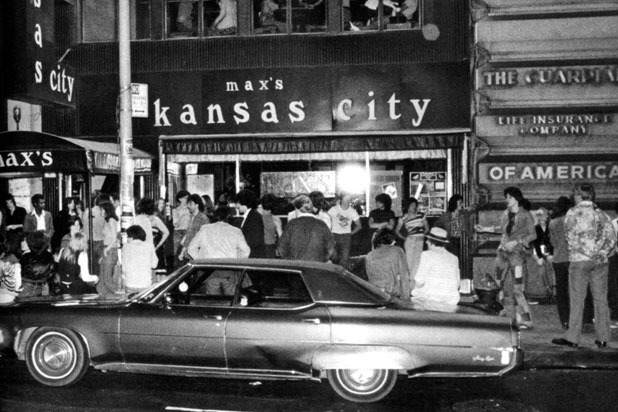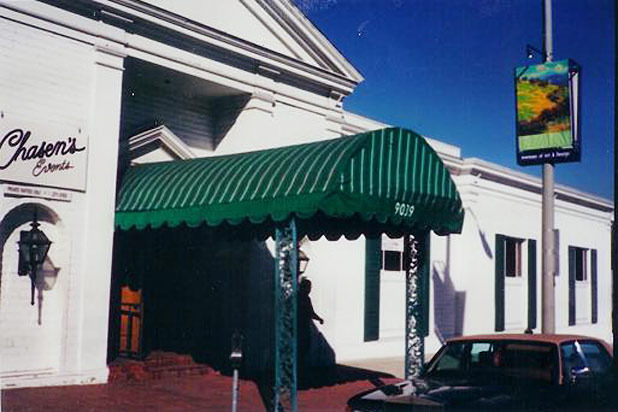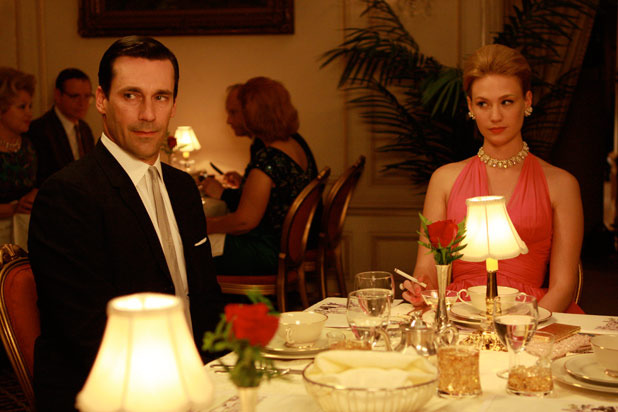10 Restaurants We Miss The Most (Slideshow)
From 1987 to 2012, Charlie Trotter's was synonymous with fine Chicago dining. Not only was it a great place to have a meal, and see and be seen, but chef Trotter is largely credited with introducing the tasting menu (degustation) to America. His intense, head-down and fearless approach to cooking influenced a generation of chefs, and his restaurant was ranked the fifth best in America by Restaurant Magazine in 2007, and was awarded two Michelin stars in 2010. But Trotter decided to travel and pursue a Master's Degree, and just like that his flagship shut down.
9) Trader Vic’s, New York City
At its peak, this legendary tiki bar and Polynesian-themed restaurant, which was founded by Victor Jules Bergeron, Jr. in the late 1930s, had as many as 25 locations nationwide and launched the whole concept of a "themed chain." It was a kitschy bastion of pu pu platters, Mai Tais, tiki torches, and other things that went out of fashion in the 1980s. The New York location was for 25 years located in the basement of the Plaza Hotel, believe it or not, before being shut down by Donald Trump in 1989. The tiki trend is back in full force now, and while four Trader Vic's are still open in the U.S. and more are open around the globe, it would be incredibly cool if it were still in New York.
8) Max’s Kansas City, New York City
If one restaurant was ever symbolic of a place and time in American culture, the shabby Max's Kansas City was it. Located on Park Avenue a half-block from Union Square, the restaurant and nightclub was opened in 1965 by Mickey Ruskin, and it quickly became a hangout for artists and sculptors of the New York School, like Robert Rauschenberg, and musicians and poets including Philip Glass, Allen Ginsberg, and William S. Burroughs. From the late '60s into the early '70s Andy Warhol and his entourage would take over the back room almost nightly, and The Velvet Underground would play there regularly. It was the glam rock scene's home base, and David Bowie, Iggy Pop, Lou Reed, and Alice Cooper were regulars. Bruce Springsteen, Bob Marley, and Aerosmith played some of their first gigs there. It closed briefly at the end of 1974, but reopened the following year and became one of the birthplaces of punk. It continued to host now-legendary acts like the Talking Heads, Blondie, Patti Smith, and the Ramones. It closed in November 1981, and is today occupied by a grab-and-go lunch spot. If those walls could talk, though...
7) Le Bec-Fin, Philadelphia
One of the finest French restaurants in the country's history, Le Bec-Fin was opened by Georges Perrier in 1970 at the age of 23, and quickly became regarded as the best restaurant in Philadelphia. It moved into a larger location in 1983, shortly before being ranked by Esquire as the best French restaurant in America, and in 1994 Condé Nast named it the best restaurant in the country. It maintained a rare five-star rating from Mobil Travel Guide until 2001, so Perrier decided to remodel it; the star was restored two years later. Perrier put the building up for sale in 2010, and he announced his retirement in February 2012 and sold the restaurant to one of its former managers, and the restaurant shut down permanently in June 2013. Shortly thereafter, one final dinner was held in the original space, which now is home to the restaurant Vetri.
6) Chasen’s, Los Angeles
Chasen's embodied the Golden Age of Hollywood, in a restaurant format. During the glory days, you'd walk in and see Humphrey Bogart in one booth, Gregory Peck in another, Frank Sinatra in another. Ronald Reagan proposed to Nancy there, and Liz Taylor had several orders of its famous chili flown to her whole she was filming Cleopatra. Sure, the food was expensive and if you were a nobody you'd be treated like one, but no other Hollywood restaurant was so perfectly suited to its time and place. The restaurant closed in 1995 after a nearly 60-year run, and was demolished and replaced by a supermarket.
5) Brown Derby, Los Angeles
The Brown Derby was a Los Angeles-based mini-chain of restaurants that has attained more or less legendary status among those who are fans of the Golden Age of Hollywood. The first Brown Derby opened in 1926 on Wilshire Boulevard, and its distinctive shape — a rounded, brown dome resembling the hat it was named after — helped to make it incredibly successful. The second location, which opened in Hollywood in 1929, became the best remembered due to its reputation as a movie star hangout as well as the birthplace of the Cobb Salad; owner Bob Cobb reportedly hastily arranged the salad from leftovers for theater owner Sid Grauman, and chopped it well because he recently had dental work done and couldn't chew well. In 1931 another opened in Beverly Hills, and in 1940 the last one opened, in Los Feliz. They're all out of business; most have been torn down, and the Los Feliz one is the only one that remains a restaurant.
4) Brennan’s, New Orleans
Oh, Brennan's. One of the most renowned restaurants in New Orleans, it opened in 1946 and basically invented brunch as we know it, not to mention bananas Foster. But the family who owns the restaurant has been fighting for just about as long as it's been opened. And after a particularly nasty spat the restaurant closed down earlier this year, and even though the owners insist that it's "temporary," it shows no signs of reopening and time soon. We miss you, Brennan's! Come back to us!
3) Chumley’s, New York City
Chumley's was the most legendary speakeasy in a city of legendary speakeasies, a former blacksmith's shop converted into a watering hole in 1922 and a hangout for writers, poets, playwrights, journalists, and activists. As its West Village neighborhood began to gentrify it stayed exactly the same, albeit catering to a more wealthy and touristy clientele, but maintaining its Prohibition-era identity. It was still going strong until a chimney in its dining room collapsed in 2006 and the façade followed in April 2007. The owners still have plans to re-open it, but it required extensive work to stabilize it and the four other buildings it was linked to. When it does re-open, however, there's no doubt that much of its old character will be lost to the ages.
2) Lutèce, New York City
If you had asked anyone in New York to name a few of the city's finest restaurants off the top of their heads between the years of 1961 and 2004, Lutèce most likely would have been mentioned. It was a paragon of fine French dining, and for many years the crown jewel of the New York culinary landscape.
Lutèce was opened in 1961 by founder Andre Surmain, who brought in a 29-year-old chef by the name of André Soltner, who soon became co-owner, to run the kitchen. During Soltner's 34-year reign at the restaurant, he only missed five days of work, and saw the restaurant earn a coveted four stars from The New York Times and be consistently named the best restaurant in the United. Soltner remains one of the world's most esteemed chefs to this day.
Soltner was one of the first chefs in America to emphasize fresh, seasonal ingredients, and he incorporated rustic dishes of his native Alsace into the menu and nightly specials, like an onion tart, which became one of the restaurant's most famed dishes. And while the menu might have indicated that Lutèce was stuffy and pretentious, the presence of Soltner and his wife Simone, who ran the dining room, gave the restaurant a homey, mom-and-pop feel (in fact, the couple lived upstairs).
This style of cuisine, rich with heavy meats and buttery sauces, began to fall out of favor in the 1990s, however, and the menu was given an edgy, modern overhaul in 1994 after Soltner sold the restaurant (a move that only served to alienate its longtime clientele). Pair that with the decline in lavish expense-account meals and a tourism drop due to the September 11 attacks, and soon management knew that the restaurant's days were numbered. Lutèce served its final meal on Valentine's Day 2004, but it still lives on the memory of New York diners, so much so that it was even visited a couple times on Mad Men.
The space today, on 50th Street between Second and Third Avenues, remains vacant and on the market, and there's a good chance it will soon be demolished to make way for condos.
1) elBulli, Spain
No conversation about influential restaurants is complete without a mention of Ferran Adrià's three-Michelin-starred elBulli. Only open for several months out of the year, reservations were only accepted one day per year (8,000 diners were accommodated each season, even though more than 2 million requests rolled in on average). So what was so great about this little restaurant in Catalonia? Adrià often employed upward of 40 chefs, tasked with preparing foods that had never existed before. And even though components might have been spherified, a technique Adrià introduced there in 2003, it was all outstandingly delicious. Adrià was always fiercely independent, doing things his way, and when he decided to close the restaurant in 2011 to pursue other goals, the culinary world went into mourning. But it's not completely over: it's slated to reopen with a completely new format, as the elBulli Foundation. Work is slated to begin in November.
